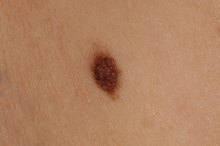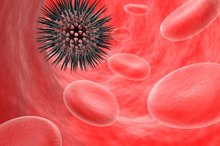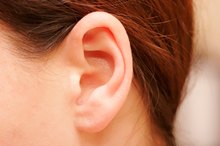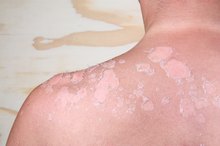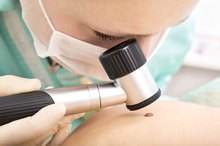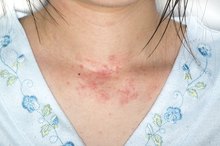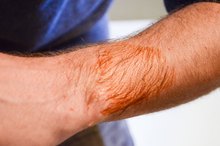What does fact checked mean?
At Healthfully, we strive to deliver objective content that is accurate and up-to-date. Our team periodically reviews articles in order to ensure content quality. The sources cited below consist of evidence from peer-reviewed journals, prominent medical organizations, academic associations, and government data.
- Mayo Clinic: Seborrheic Keratosis
- Mayo Clinic: Actinic Keratosis
- MedlinePlus: Seborrheic Keratosis
- MedlinePlus: Actinic Keratosis
The information contained on this site is for informational purposes only, and should not be used as a substitute for the advice of a professional health care provider. Please check with the appropriate physician regarding health questions and concerns. Although we strive to deliver accurate and up-to-date information, no guarantee to that effect is made.
Actinic Keratosis Vs. Seborrheic Keratosis
The appearance of skin growths or lesions can be frightening because they may look like skin cancer. Not all skin problems are cancerous, however. Some, such as seborrheic keratosis, are benign 3. Even the precancerous skin lesions, such as actinic keratosis, can be treated before they progress to cancer 124.
Seborrheic Keratosis
Seborrheic keratosis causes a growths to appear on the neck, face and trunk, the Mayo Clinic explains 13. These growths can be black, brown, yellow or tan. The growths are often round or oval shaped and are flat or slightly raised from the skin. The lesions of seborrheic keratosis are marked by a characteristic "pasted-on" appearance and may be itchy 3.
Actinic Keratosis
Small Bumps All Over the Legs That Are Flesh Colored
Learn More
Actinic keratosis, according to Skin Care Physicians, leads to skin growths and lesions that are dry and scratchy or scaly in appearance 124. Sometimes theses growths are skin colored, which can make them hard to see. In other cases, these lesions form small red bumps or larger scaly patches of skin. These skin lesions typically occur in places that are exposed to the sun.
- Actinic keratosis, according to Skin Care Physicians, leads to skin growths and lesions that are dry and scratchy or scaly in appearance 1.
- In other cases, these lesions form small red bumps or larger scaly patches of skin.
Causes
Actinic keratosis is caused by sun exposure 124. Sunlight contains ultraviolet light, which is able to damage the DNA of skin cells, leading to mutations that can cause them to grow abnormally. The area around actinic keratoses, according to Skin Care Physicians, often shows signs of sun damage 2. The cause of seborrheic keratosis, on the other hand, is unknown 3.
Complications and Diagnosis
How to Remove Moles With Glycolic Acid
Learn More
Seborrheic dermatosis rarely causes any serious medical problems, but the growths can be cosmetically undesirable or become inflamed. Actinic keratosis, on the other hand, often progresses to skin cancer 124. These two skin problems can often be differentiated based on the appearance of the lesions, MedlinePlus explains, although a skin biopsy may be needed to definitive diagnosis the skin problems.
Treatment
Both types of keratosis can be treated using surgical curettage, in which a sharp tool is used to cut away the skin growth. They can also be treated using liquid nitrogen or an electrical current to freeze or burn away the growths. Actinic keratosis can also be treated using microdermabrasion, chemical peels or phototherapy 124.
Related Articles
References
- Mayo Clinic: Actinic Keratosis
- Skin Care Physicians: Actinic Keratosis
- MedlinePlus: Seborrheic Keratosis
- MedlinePlus: Actinic Keratosis
- Cedars-Sinai. Seborrheic Keratosis.
- American Academy of Dermatology Association. Seborrheic Keratoses: Overview.
- American Academy of Dermatology Association. Seborrheic Keratoses: Signs and Symptoms.
- Conic RZ, Napekoski K, Schuetz H, Piliang M, Bergfeld W, Atanaskova Mesinkovska N. The role of immunosuppression in squamous cell carcinomas arising in seborrheic keratosis. J Am Acad Dermatol. 2017 Jun;76(6):1146-1150. doi: 10.1016/j.jaad.2016.12.002
- Cimpean I, Theate I, Vanhooteghem O. Seborrheic keratosis evolution into squamous cell carcinoma: A truly modified sun-related tumor? A case report and review of the literature. Dermatol Reports. 2019 Apr 17;11(1):7999. doi: 10.4081/dr.2019.7999
- American Academy of Dermatology Association. Seborrheic Keratoses: Who Gets and Causes.
- Del rosso JQ. A Closer Look at Seborrheic Keratoses: Patient Perspectives, Clinical Relevance, Medical Necessity, and Implications for Management. J Clin Aesthet Dermatol. 2017;10(3):16-25.
- Rashmi GS Phulari et al. Seborrheic keratosis. J Oral Maxillofac Pathol. 2014;18(2):327-30. DOI: 10.4103/0973-029X.140926
- Wollina U. Seborrheic Keratoses - The Most Common Benign Skin Tumor of Humans. Clinical presentation and an update on pathogenesis and treatment options. Open Access Maced J Med Sci. 2018;6(11):2270-2275. doi:10.3889/oamjms.2018.460
- Gurel MS, Aral BB. Effectiveness of erbium:YAG laser and cryosurgery in seborrheic keratoses: Randomized, prospective intraindividual comparison study. J Dermatolog Treat. 2015 Oct;26(5):477-80. doi: 10.3109/09546634.2015.1024597
- Bedir R, Yurdakul C, Gucer H, Sehitoglu I. Basal Cell Carcinoma Arising within Seborrheic Keratosis. J Clin Diagn Res. 2014; 8(7): YD06-YD07. doi:10.7860/JCDR/2014/8665.4604
- Boyd A, Su P, Shyr Y, et al. Squamous cell carcinomas in situ arising in seborrheic keratoses: an association with concomitant immunosuppression? Int J Dermatol. 2014;53(11):1346-50. doi:10.1111/ijd.12086
Writer Bio
Adam Cloe has been published in various scientific journals, including the "Journal of Biochemistry." He is currently a pathology resident at the University of Chicago. Cloe holds a Bachelor of Arts in biochemistry from Boston University, a M.D. from the University of Chicago and a Ph.D. in pathology from the University of Chicago.

